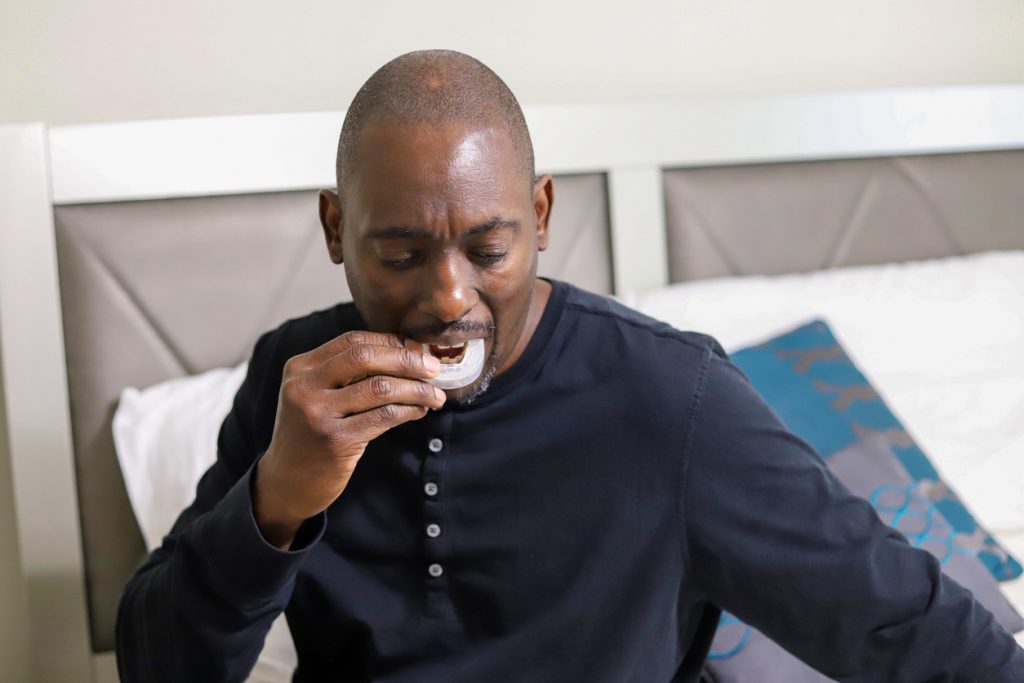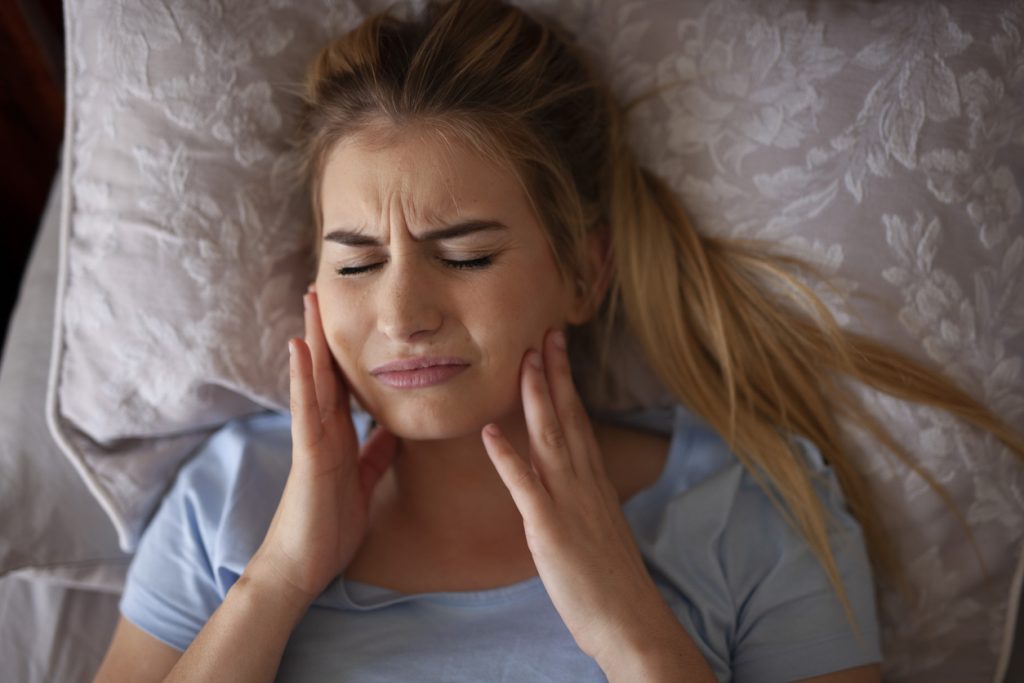Dr. Postol Opens a New Center for Sleep Apnea & TMJ Therapy

We are excited to announce the opening of our new practice, Gateway Center for Sleep Apnea & TMJ Therapy, located in St. Louis, MO. We are a medical practice dedicated to the diagnosis and treatment of sleep apnea and TMJ disorders.
Sleep apnea is a serious condition that affects millions of people worldwide. It is characterized by repeated episodes of stopped or shallow breathing during sleep. Sleep apnea can lead to a number of health problems, including heart disease, stroke, and diabetes.
TMJ disorder is a condition that affects the temporomandibular joint, which is the joint that connects your jaw to your skull. TMJ disorder can cause pain, clicking, and popping in the jaw. It can also lead to headaches, earaches, and facial pain.
At Gateway Center for Sleep Apnea & TMJ Therapy, we offer a comprehensive range of services to diagnose and treat sleep apnea and TMJ disorders. Dr. Postol is an experienced sleep specialist who will work with you to develop a personalized treatment plan that meets your individual needs.
We are committed to providing our patients with the highest quality care possible. We use the latest technology and techniques to diagnose and treat sleep apnea and TMJ disorders. Some of our treatments include:
- EMP- Elastic Mandibular Advancement
- APM – Adjustable PM Positioner
- MAD – dorsal oral appliance (also known as a mandibular advancement device or MAD)
- TAP® 3 – Thornton Adjustable Positioner
- Herbst Oral Appliance

Sleep Apnea Treatment Options
EMA, APM, MAD, TAP® 3, and the Herbst Oral Appliance are all types of oral appliances used to treat obstructive sleep apnea (OSA). OSA is a sleep disorder that occurs when the airway becomes blocked during sleep, which can lead to snoring and breathing pauses. All five appliances work by moving the lower jaw forward, which helps to keep the airway open during sleep.
Here is a table that summarizes the key differences between EMA, APM, MAD, TAP® 3, and the Herbst Oral Appliance:
| Characteristic | EMA | APM | MAD | TAP® 3 | Herbst Oral Appliance |
|---|---|---|---|---|---|
| Mechanism of action | Uses elastics to move the lower jaw forward | Uses a custom-fitted appliance to move the lower jaw forward | Uses a custom-fitted appliance to move the lower jaw forward | Uses a custom-fitted appliance to move the lower jaw forward | Uses a custom-fitted appliance to move the lower jaw forward |
| Effectiveness | Effective in treating mild to moderate OSA | Effective in treating mild to severe OSA | Effective in treating mild to severe OSA | Effective in treating mild to moderate OSA | Effective in treating mild to severe OSA |
| Comfort | May be uncomfortable for some people | Comfortable for most people | Comfortable for most people | Comfortable for most people | Comfortable for most people |
| Cost | More expensive than APM and MAD | More expensive than MAD | Less expensive than EMA | Less expensive than APM and MAD | Less expensive than EMA and MAD |
If you are considering treatment for OSA, it is important to talk to Dr. Postol about the best type of oral appliance for you. He can help you decide which appliance is right for you based on your individual needs and preferences.
Here are some additional details about each type of appliance:
EMA
An EMA, or Elastic Mandibular Advancement, is a type of oral appliance that uses elastics to move the lower jaw forward. The elastics are attached to the appliance and to the teeth. When the patient wears the appliance, the elastics pull the lower jaw forward, which helps to keep the airway open during sleep.
APM
An APM, or Adjustable PM Positioner, is a type of oral appliance that uses a custom-fitted appliance to move the lower jaw forward. The appliance is made of a soft, flexible material. It is designed to be comfortable to wear and easy to adjust. The APM can be adjusted by the patient or by Dr. Postol, depending on the individual’s needs.
MAD
A MAD, or Mandibular Advancement Device, is a type of oral appliance that uses a custom-fitted appliance to move the lower jaw forward. The appliance is made of a harder material than an APM. It is not designed to be adjusted, and it may be less comfortable to wear than an APM.
TAP® 3
The TAP® 3 is a type of oral appliance that uses a custom-fitted appliance to move the lower jaw forward. The appliance is made of a soft, flexible material. It is designed to be comfortable to wear and easy to adjust. The TAP® 3 can be adjusted by the patient or by Dr. Postol, depending on the individual’s needs.
Herbst Oral Appliance
The Oral Appliance Herbst is a type of sleep apnea oral device that uses an acrylic custom-fitted appliance to move the lower jaw forward. The appliance is made of a harder material than an APM. It is adjustable but it may be less comfortable to wear than an APM. However, the Herbst appliance is more effective in treating severe OSA than other types of oral appliances.
Ultimately, the best type of oral appliance for you will depend on your individual needs and preferences. Talk to Dr. Postol to learn more about the different types of oral appliances and to decide which one is right for you.

TMJ Disfunction Treatment Option
Home Remedies
There are a number of home remedies that can help to relieve the symptoms of TMJ disorder. Some of these remedies include:
- Applying a cold compress. A cold compress can help to reduce inflammation and pain. Apply a cold compress to the affected area for 15-20 minutes at a time.
- Using a warm compress. A warm compress can help to relax muscles and improve blood flow. Apply a warm compress to the affected area for 15-20 minutes at a time.
- Taking over-the-counter pain medication. Over-the-counter pain medications, such as ibuprofen or acetaminophen, can help to relieve pain and inflammation.
- Avoiding certain foods. Some foods, such as hard, chewy, or sticky foods, can aggravate TMJ symptoms. It may be helpful to avoid these foods until your symptoms improve.
- Getting regular exercise. Exercise can help to reduce stress and tension, which can contribute to TMJ symptoms. Aim for at least 30 minutes of moderate-intensity exercise most days of the week.
- Managing stress. Stress can worsen TMJ symptoms. Find healthy ways to manage stress, such as exercise, relaxation techniques, or spending time with loved ones.
If your symptoms are severe or do not improve with home remedies, you may need to see Dr. Postol. He may recommend additional treatments, such as physical therapy, a mouthguard, or surgery.
Here are some additional tips to help you manage TMJ disorder:
- Maintain good posture. Good posture can help to reduce stress on the jaw muscles.
- Avoid clenching your teeth. Clenching your teeth can put stress on the jaw joints. If you find yourself clenching your teeth, try to relax your jaw muscles.
- Get enough sleep. Sleep deprivation can worsen TMJ symptoms. Aim for 7-8 hours of sleep each night.
- See a dentist for regular checkups and cleanings. Your dentist can check for any problems with your teeth or bite that may be contributing to TMJ symptoms.
Oral Splints
An oral splint is a device that is worn in the mouth to protect the teeth and jaw from injury. It can also be used to treat a variety of other conditions, such as temporomandibular joint disorder (TMJ), bruxism (teeth grinding), and sleep apnea.
There are two main types of oral splints: hard and soft. Hard splints are made of acrylic or metal and are typically used to protect the teeth from injury. Soft splints are made of a softer material, such as silicone, and are typically used to treat TMJ, bruxism, and sleep apnea.
To create an oral splint, we will take an impression of your teeth. The impression will be sent to a lab, where the splint will be custom-made. Once the splint is made, we will fit it to your teeth and make any necessary adjustments.
Oral splints are typically worn for several hours a day. The exact amount of time will vary depending on the condition being treated. For example, a splint used to protect the teeth from injury may only need to be worn during sports or other activities where there is a risk of injury. A splint used to treat TMJ, bruxism, or sleep apnea may need to be worn all night.
Trigger Point Injections (TPI)
Trigger point injections (TPIs) are a minimally invasive procedure that involves injecting a local anesthetic and/or corticosteroid medication into a trigger point, which is a hyperirritable spot in a muscle that can cause pain. TPIs are used to treat a variety of conditions, including temporomandibular joint disorder (TMJ).
TPIs are thought to work by interrupting the pain cycle and reducing inflammation. They can be an effective treatment for TMJ, but they are not a cure.
The procedure is done in Dr. Postol’s office and takes about 15 minutes. Dr. Postol will clean the skin over the trigger point and then inject a small amount of local anesthetic and/or corticosteroid medication. You may feel some discomfort during the injection, but it should be brief.
After the injection, you may experience some soreness and swelling at the injection site. This is usually mild and goes away on its own within a few days.
TPIs are generally safe, but there are some potential side effects, including:
- Bleeding
- Infection
- Numbness
- Pain
If you experience any of these side effects, be sure to talk to Dr. Postol.
Botox
Botox, or botulinum toxin, is a medication that is used to relax muscles. It is typically used to treat wrinkles, but it can also be used to treat TMJ disorder.
Botox is thought to work by relaxing the muscles that clench and grind the teeth. This can help to reduce pain and improve function.
The procedure is done in Dr. Postol’s office and takes about 15 minutes. Dr. Postol will clean the skin over the masseter and temporalis muscles and then inject a small amount of Botox. You may feel some discomfort during the injection, but it should be brief.
Botox injections for TMJ disorder can be an effective treatment, but they are not a cure. The effects typically last about 3 to 6 months, so injections may need to be repeated.
Botox injections for TMJ disorder are generally safe, but there are some potential side effects, including:
- Bruising
- Numbness
- Pain
- Dry mouth
If you experience any of these side effects, be sure to talk to Dr. Postol.
Referral to Physical Therapy
Physical therapy can help with TMJ disorder by reducing pain, improving the range of motion, and strengthening the muscles around the jaw. Physical therapists use a variety of techniques to treat TMJ disorder, including:
- Manual therapy: This involves applying pressure and massage to the muscles around the jaw to reduce pain and improve the range of motion.
- Exercises: Physical therapists will teach you exercises to strengthen the muscles around the jaw and improve the range of motion.
- Heat and ice: Heat and ice can be used to reduce pain and inflammation.
- Taping: Taping can be used to support the jaw and improve the range of motion.
- Education: Physical therapists will educate you about TMJ disorder and how to manage your symptoms.
Dr. Postol will refer you to a physical therapist in place of or in addition to other treatments if he sees that it will provide the best results for your condition.
Moist Heat
Moist heat can help with TMJ dysfunction by increasing blood flow to the area, which can help to relax the muscles and reduce pain. Moist heat can also help to reduce inflammation.
To apply moist heat to the area, you can use a warm, wet washcloth or a heating pad. Be sure to avoid applying heat directly to the skin, as this can cause burns. You can also try using a moist heat pack, which is a commercially available device that is designed to be heated in the microwave.
Apply moist heat for 15-20 minutes at a time, several times a day. You can do this as often as needed to relieve pain and discomfort.
Medications As Needed
There are a variety of medications that can be used to help with TMJ dysfunction. The most common medications include:
- Over-the-counter pain relievers: These medications, such as acetaminophen (Tylenol) or ibuprofen (Advil), can help to reduce pain and inflammation.
- Prescription pain relievers: These medications, such as naproxen (Aleve) or ketorolac (Toradol), are stronger than over-the-counter pain relievers and can be used to treat more severe pain.
- Muscle relaxants: These medications, such as cyclobenzaprine (Flexeril) or diazepam (Valium), can help to relax the muscles in the jaw and reduce pain.
- Antidepressants: These medications, such as amitriptyline (Elavil) or nortriptyline (Pamelor), can help to reduce pain and inflammation and improve sleep quality.
It is important to talk to Dr. Postol before taking any medication for TMJ dysfunction. He can help you to determine which medication is right for you and can advise you on the proper dosage and frequency of use.
If you are suffering from sleep apnea or TMJ disorder, we encourage you to contact us today. We will be happy to answer any questions you have and schedule a consultation.

